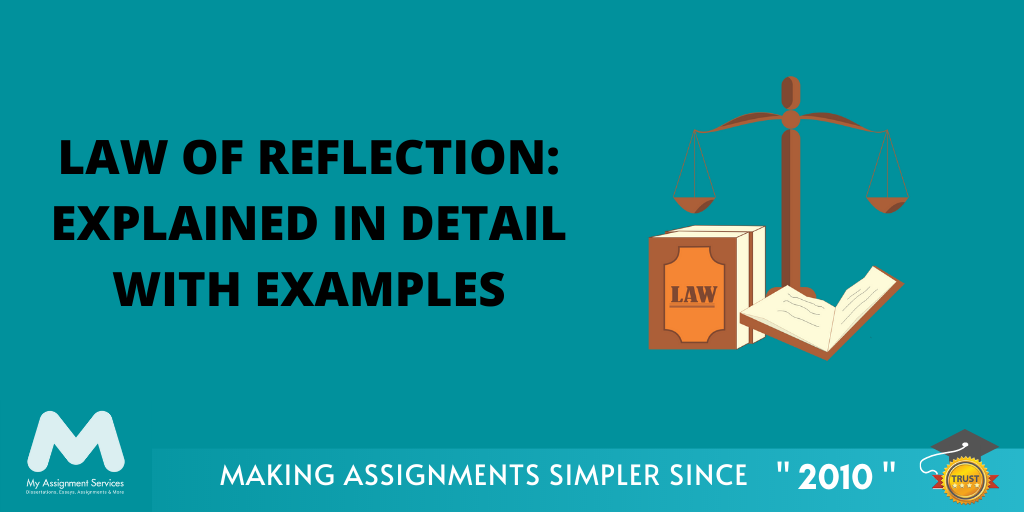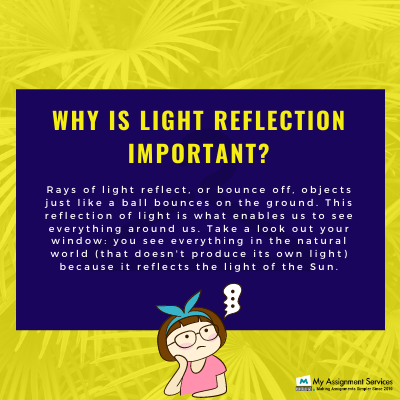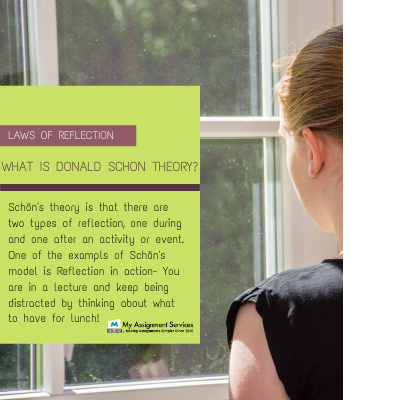
The Law of Reflection is one of the most basic and fundamental laws of physics governing how light behaves when it reflects off a surface. It states that the angle at which light hits a surface is equal to the angle at which it is reflected. This law is also known as the "C-A-B" law, or the "triangle CAB" law, because a triangle with its angles can represent it labelled C, A, and B. These three angles are all equal, meaning that the incident angle (angle C) and the reflected angle (angle B) are both equal to the incidence (angle A). This law is also known as the "mirror" law because it governs how light behaves when it reflects off a mirror.

The Law of Reflection is important in physics because it helps us understand light's behaviour. It is especially useful in optical engineering and microscopy, where we need to know how light behaves when it hits a surface. The law can be used to calculate the angle of reflection, the angle of incidence, and the reflectivity of a surface. It can also be used to determine the position and direction of a reflected ray. In addition, the law can be used to find the equation of a line perpendicular to a reflected ray.
The Law of Reflection is used in many different applications including:
1.) Optical Engineering - The law is used to design and manufacture optical devices such as mirrors, lenses, and prisms. It can be used to calculate the angles at which light will be reflected or refracted and to determine the position and direction of a reflected or refracted ray.
2.) Microscopy - The law is used to understand the behaviour of light when it passes through microscope lenses. It can be used to calculate the magnification of a microscope and to determine the position and direction of a magnified image.
3.) Interior Design - The law can be used to create mirrors that reflect light in specific directions, making a room look brighter and more inviting. It can also be used to make sure that windows are positioned in such a way that they reflect natural light into dark rooms, brightening up spaces where there is little sunlight.
4.) Signal Reflectors - The law is used to calculate the reflection of radio waves off of signal reflectors placed on planes, ships, spacecraft, etc. This information can then be used to determine the position or direction of these objects when they are far away from each other.
There are many examples of the Law of Reflection in everyday life. For example, a mirror is a device that obeys the Law of Reflection. When light hits a mirror, it reflects off at an equal angle. If you stand in front of a mirror and look straight on, then you will see yourself looking straight on as well. Since your reflection perfectly overlaps your position from the viewpoint of the mirror, this means that there is no angle between you and your reflection. This demonstrates that reflected angles are equal to incident angles for mirrors (angle A = angle B).

Another example given by our mentors of Law assignment help is when two cars approach each other head-on (i.e., both travelling directly toward each other). Each car has bright headlights that are shining directly toward the other car. As the cars get closer and closer, the headlights start to overlap. This is because the angle between the headlights and the direction of travel decreases as the cars get closer. Eventually, when the cars collide, the headlights will be perfectly aligned and will create one big light. This demonstrates that when two objects are headed directly at each other, their reflections will be aligned as well (angle A = angle B).
The Law of Reflection is also demonstrated when you look at a building or other large structure from a distance. If you look straight at the building, you will see it in perfect focus. However, if you try to look at the sides of the building, you will find that they are blurry. This is because when you are looking at the side of the building, your eyes are angled away from the direction that the building is facing. Since the angle between your eyes and the direction of the building is greater than the angle between your eyes and the building's reflection, the reflection is blurry. This demonstrates that reflections are sharper when they are perpendicular to the direction of incidence (angle A is perpendicular to angle B).
These are just a few examples of how the Law of Reflection can be observed in everyday life. The law is constantly being used in a variety of different scenarios, many of which we may not even be aware of. It plays an important role in helping us understand how light behaves and has led to many technological advancements as a result.
The Law of Reflection is a simple and true physical law that states that the angle of incidence equals the angle of reflection. It can be used to demonstrate how light behaves when it reflects off of different surfaces and into different angles. This law is used in many areas, including microscopy, interior design, signal reflectors and more. There are plenty of everyday examples that show this law in action as well. By understanding the way that light works based on this law, people have been able to develop technologies that would not have otherwise been possible. For example, mirrors are devices that rely on this law for their function. The Law of Reflection is very straightforward and easy to understand once you know what's going on behind the scenes with light.
It is a cornerstone of physics and has many implications for the world around us. Law assignment help sessions from My Assignment Services can allow you to overcome the difficulties in understanding the law of reflection. If you got an assignment on it, we suggest you ask our team for assistance in case of queries. Fill the form to get in touch with us!

Hi! My name is Tony Smith and I am a Master of Fine Arts (MFA), and I work as an accomplished artist and a professor of Fine Arts. My distinct art style has been exhibited in galleries all over the world which inspire other students to do the same. That is why I have been working as an academic writer in Arts & Humanities for Online Assignment Expert to help all the needy students.
1,212,718Orders
4.9/5Rating
5,063Experts
Turnitin Report
$10.00Proofreading and Editing
$9.00Per PageConsultation with Expert
$35.00Per HourLive Session 1-on-1
$40.00Per 30 min.Quality Check
$25.00Total
FreeGet
500 Words Free
on your assignment today
Trending now
The Student Corner
Subscribe to get updates, offers and assignment tips right in your inbox.
Popular Posts
Popular Posts
Request Callback
Doing your Assignment with our resources is simple, take Expert assistance to ensure HD Grades. Here you Go....
Speak directly with a qualified subject expert.
Get clarity on your assignment, structure, and next steps.
In this free session, you can:
Loved reading this Blog? Share your valuable thoughts in the comment section.
Add comment